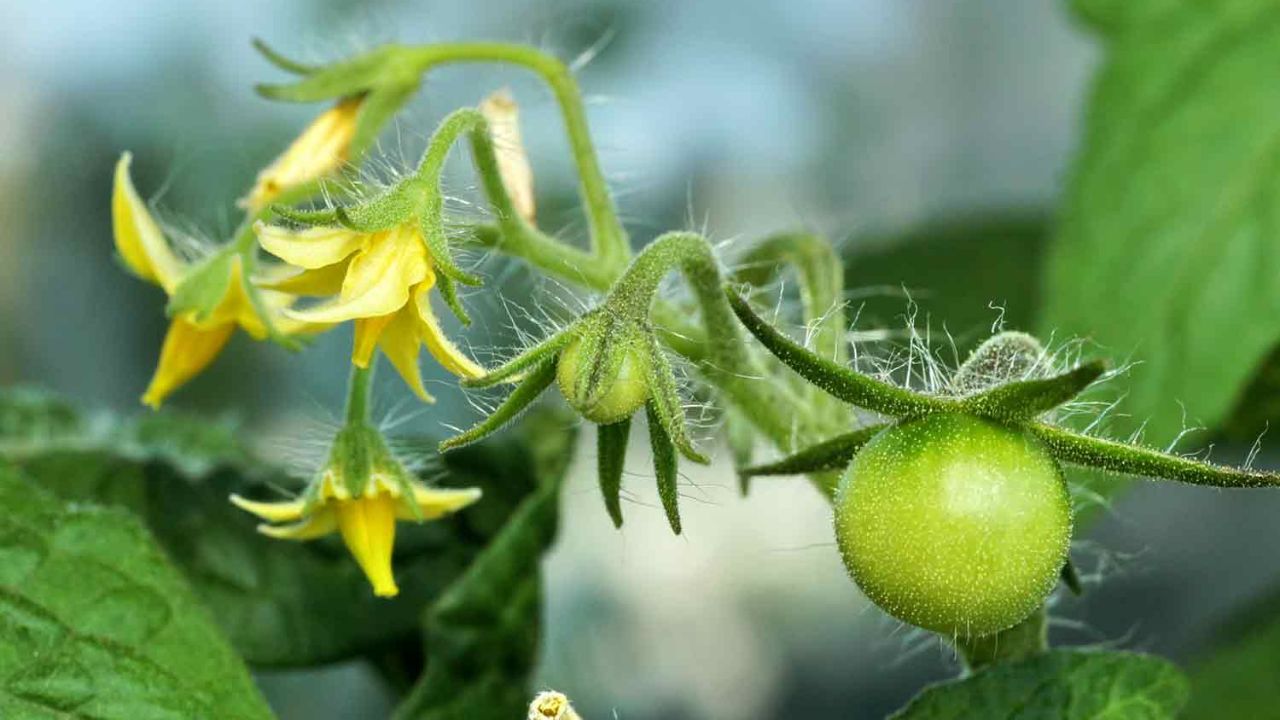Tomatoes are a popular garden plant, cherished for their delicious fruits and versatility in cooking. One intriguing aspect of tomato cultivation is their pollination process. Understanding whether tomatoes are self-pollinating can significantly impact gardening success.
All About Tomato Pollination
Tomatoes (Solanum lycopersicum) possess unique flowers that play a crucial role in their reproductive cycle. Each flower typically contains both male (anthers) and female (ovary) parts, allowing for self-pollination. This characteristic makes tomatoes particularly resilient and suitable for home gardens.
Flower Structure:
A typical tomato flower features five petals and a cluster of yellow anthers surrounding a central pistil. The anthers release pollen, which can fertilize the ovary within the same flower or from another flower.
Pollination Process:
During the pollination process, pollen must move from the anthers to the stigma (the receptive part of the pistil). In tomatoes, this can happen naturally through wind or pollinators like bees, but the plant’s structure often enables self-pollination without external assistance.
Vibration and Pollen Release:
Interestingly, tomato plants can benefit from a method called “buzz pollination.” This involves bees vibrating their bodies while visiting flowers, which effectively releases pollen. Home gardeners can mimic this technique by gently shaking the plants, encouraging pollen distribution and enhancing fruit set.
Fertilization and Fruit Formation:
Once pollination occurs, fertilization follows, leading to the development of seeds within the ovary. The ovary then matures into a fruit, showcasing the successful reproductive process. Well-pollinated flowers typically yield more robust and plentiful tomatoes.
How to Hand-Pollinate Tomatoes:
For gardeners wanting to ensure successful pollination, hand-pollination is a straightforward technique:
- Identify the Flowers: Look for open flowers ready for pollination.
- Use a Tool: A small brush or cotton swab can transfer pollen from the anthers to the stigma.
- Gently Shake the Plant: This can also help release any trapped pollen.
Frequently Asked Questions about Tomato Self-Pollination
Q: Can tomatoes pollinate themselves?
A: Yes, tomatoes are self-pollinating and typically do not require external pollination.
Q: How can I improve fruit set?
A: Encourage pollinators in your garden and consider hand-pollination during peak flowering times.
Q: Do environmental conditions affect pollination?
A: Yes, factors like humidity and temperature can influence pollen viability and pollination success.
Q: What if my tomato plants aren’t producing fruit?
A: Check for sufficient sunlight, water, and nutrients. Poor pollination can also be a factor.
Conclusion:
Understanding tomato pollination is essential for any gardener looking to maximize their harvest. With their self-pollinating nature and the option for hand-pollination, tomatoes offer a resilient and rewarding gardening experience. By creating the right conditions, you can enjoy a bountiful crop of fresh, flavorful tomatoes.





